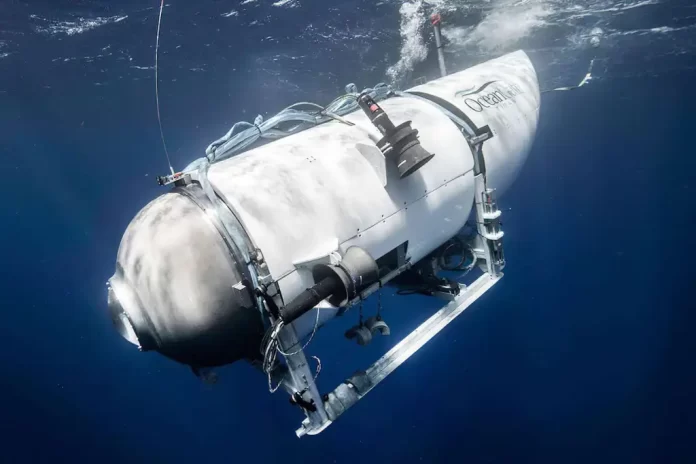The Titanic crash of 1912 was among the four most calamitous tragedies of the 20th century in the history of humanity. The others were World War I (28 July 1914 – 11 November 1918), World War II (1939 to 1945), and the Challenger STS Explosion of 28th January 1986. World War I and II claimed millions of lives and properties worth inestimable trillions of US Dollars principally caused by human conflicts oiled by power greed, colonialism, selfishness, and muscle-flexing among the so-called superpowers and their allies.
However, the Titanic crash and Challenger explosion claimed less than 2,000 lives and properties worth a few billion US Dollars were caused by human unforeseen errors that eroded the confidence, which was created by human intelligence and advancement. These two tragedies, the Titanic crash, and the Challenger explosion shocked the world, brought out the fallibility of human technologies, and reinforced the conviction of some of us that Nature has omniscient power, which is auto-galvanized by the Almighty.
The Challenger, a codename for Apollo 12 completed nine missions from 1983 to 1985 and carried several people in space. Those missions made the World used to space missions as a common phenomenon and suddenly the Challenger disaster came. It was very devastating, tragic, and a major catastrophe to the entire humanity in the history of NASA. Millions of people watched the video of the Challenger tragedy live, through CNN.
The whole world was terrified watching and listening to the commentaries of the disaster as it was unfolding. Many schoolchildren were horrified as they were among the watchers of the TV broadcast of the flight to cheer up their teacher who was among the crew.
The Challenger mission was scheduled to study Halley Comet while it was orbiting. Halley Comet is a short-period comet visible from Earth every 75–76 years. Halley is the only known short-period comet that is regularly visible to the naked eye from Earth, and thus, could be seen once by a person in a human lifetime. Halley last appeared in the inner parts of the Solar System in 1986 and will next appear in mid-2061, which is 38 years from now. The Challenger disaster cost the USA $3.2 billion. The families of the victims shared in cash and annuities worth $7,735,000.
Titanic, the biggest vessel in the world started its maiden voyage from Southampton (England) enroute to New York City (USA) across the Atlantic Ocean. It carried on board 2,228 people, 39,000 kg of meat, 2,400 kg of eggs, 1,600 kg of onions, 5,350 kg of apples, 800 kg of ice cream, and other unaccountable items. At the time, it was one of the largest and most opulent ships in the world. It was also considered unsinkable, due to a series of compartment doors that could be closed if the bow was breached.
One of the ship designers, Edward John Smith was reported boasting “Even God himself couldn’t sink this ship”. The boast emanated from the design sophistication of the ship which was then considered the limit of human intelligence in technology. The ship had sixteen major watertight compartments in its lower section, which could easily be sealed off in the event of a punctured hull and thus, the ship was deemed unsinkable, what a human fallacy.
Consequently, four days into the Titanic’s maiden voyage, it struck an iceberg, and less than three hours later the ship sank under on April 15, 1912, killing 1,508 people. The ship finally went down to 4,000 meters deep in the area of Newfoundland, 450 km off the coast of Canada, in the northern part of the Atlantic Ocean. The designer of the Titanic went down with his ship.
Immediately after the Titanic disaster, efforts were made to locate the wreckage. However, it took the strenuous effort of 73 years to discover part of the Titanic wreckage in 1985 because of technical limitations, the sheer massiveness of the Ocean, and the depth of more than 3 km from the water’s surface. The wreckage was discovered by Robert Ballard, an American oceanographer and marine geologist whose pioneering use of deep-diving submersibles laid the foundations for deep-sea archaeology. The wreckage discovery in 1985 created more interest in recovering and bringing out the remains of the Titanic.
Curiosity and interest in the Titanic wreckage laying under the sea for over 100 years attracted the attention of influential people like Stockton Rush, the CEO of OceanGate, the manufacturers of Titan, the ill-fated submersible. Rush was a nature lover, an adventurer par excellence. He was quoted saying “At some point, safety just is pure waste,” adding “I mean, if you just want to be safe, don’t get out of bed, don’t get in your car, don’t do anything.”
Rush, 61, believed deeply that the sea, rather than the sky, offers humanity the best shot at survival when the Earth’s surface becomes uninhabitable. He said, “The future of mankind is underwater, it’s not on Mars.” His idea was the driving force behind the creation of OceanGate with the mission of “increasing access to the deep ocean through innovation.”
Rush was concerned about the documented report that metal-eating bacteria has already consumed most of Titanic’s wreckage. He said, “the ocean is taking this thing (Titanic), and we need to document it before it all disappears or becomes unrecognizable.” Under the leadership of Rush, OceanGate manufactured a submersible codenamed “Titan” for a research expedition to the Titanic’s wreckage. The expedition was keenly competed for by wealthy influential personalities across the globe and five people were ticked for the mission at the cost of $250,000 per person.
The five passengers included Rush the owner and CEO of the company. Others were Shahzada Dawood and his son Suleman Dawood. Dawood was a Pakistani-British businessman with an estimated net worth of $360 Million. Hamish Harding, a British billionaire businessman and explorer was the fourth person while the fifth was Paul-Henri Nargeolet. Nargeolet was a French deep-sea explorer and Titanic expert, he was nicknamed Mr. Titanic and he was the first to bring out part of Titanic wreckage in 1987. Mr. “Titanic” was in the French Navy before his retirement.
During his service, he was appointed Commander of the Groupement de Plongeurs Démineurs de Cherbourg, whose mission was to find and neutralize underground mines in the 1980s. These were the 5-man team of the doomed Titan.
One hour, forty-five minutes into the mission, down to the Titanic wreckage, Titan lost contact with its mother ship and went missing. Pronto, a 5-day extraordinary International Search Operation was launched by the US Navy. After several hours of searching in an incredibly unforgiving environment, and exploring all options to rescue the five people onboard but regrettably, they all died in a catastrophic implosion.
Inopportunely, technological advancement has made man perilously dance with nature aiming to bridge the knowledge gap. The gap will continue to be there as every research finding, discovery or innovation brings forth several research questions needing answers. Caution is the key and the watch-word is perilous with nature.



